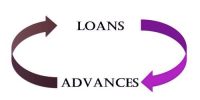The loans which cannot easily be recovered from borrowers are called Problem loans. When the loans can’t be repaid according to the terms of an initial agreement or in an otherwise acceptable manner, it will be called problem loans.
If the loan can be identified earlier as problem loans before it actually happens, regulating monitoring along with some other measures can prevent the loans from being problems loans. For identifying the “potential” problem loans, we have to know the symptoms of a problem loan.
The symptoms of problem loans can be classified in the following way:
- Quantities Indicators
- Qualitative Indicators
Quantitative Indicators:
- Preparation of irregular and delayed financial statements.
- Refusal of a large insurance claim.
- Creating hindrances to the main source of income
- Diminishing deposit balance.
- Inability to pay the debt of creditors other than the bank.
- Non-repayment of the loan installments as repayment dates.
- Entering into big loan contracts frequently with institutions and persons other than the existing bank.
- A continuous decline in the market price of the shares of the borrowing company.
- Sudden rise or fall of large size deposit withdrawals.
- Excessive cash dividend payouts from reserve fund or even front capital.
- At the end of the cycle, creditors are not completely paid out.
- Concentration changes from a major well-known customer to one of lesser stature.
- Loans are made to or from officers and affiliates.
- Unable to clean up bank debt, or cleanups are affected by rotating bank debt.
- Investment in fixed assets has become excessive.
Quantitative indicators provide valuable information to the bank about the problem or make repeat requests of increasing or deferring the installment date. After getting this preliminary indication, banks may seek information regarding the above mentioned quantitative factor. Then, the bank can be certain about the problem loan.
















